Haüy : ARCHAEOLOGY AND THE OBJETS d’ART



Eclectic and open-minded, Haüy also collected various art and archaeological objects.
He bases many of these objects and labels them as objects of science. He collects objects made of unusual materials such as sulfur.

This rock crystal cross is a typical work of art from the region of Briançon in the French Alps. It represents the complex pysche of Haüy: the rationalist and the believer. Haüy was as much a scientist as an abbey.
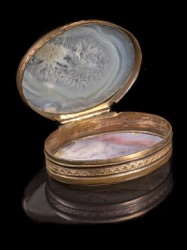
FROM GEMS TO MOUNTED GEMS OR OBJETS D’ART
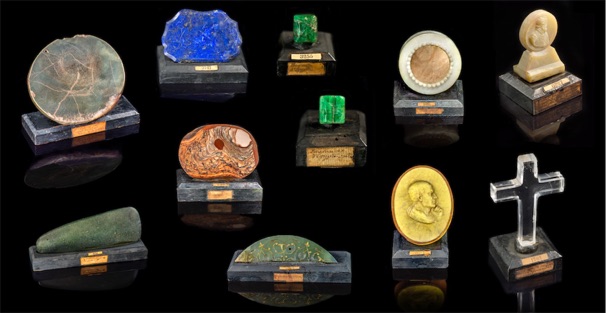
The provenance of this Inca pyrite mirror was recently found by François Gendron: it comes from the French mission to Ecuador (1735-1745) led by Louis Godin, with Pierre Bouguer, Charles de la Condamine and Joseph de Jussieu who gave the mirror to Haüy some fifty years later. The inventory of the Haüy collection specifies a Jussieu provenance but had not been noticed and recontextualized to date.
Snuffbox in agate and gold. Paris, MNHN, minéralogie. Photo: F. Farges©MNHN.
case in marble wih pyrite crystals. Paris, MNHN, minéralogie. Photo: F. Farges©MNHN.
pyrite polished as a mirror. Inca culture, 14th century, Ecuador. Height : 10,4 cm. Paris, MNHN, minéralogie. Photo: F. Farges©MNHN
Cross in rock crystal, Briançon art (Hautes-Alpes), France, end 18th century. Height : 7,7 cm. Paris, MNHN, minéralogie. Photo: F. Farges©MNHN
Objects of art and archaeology from the Haüy collection (from left to right and from top to bottom): Inca pyrite mirror (14th century), lapis lazuli snuffbox lid (France, 18th century), two antique emeralds (Roman-Egyptian, 2nd century B.C.), gypsum alabaster box (Italy, 18th century) soapstone bust of King Henri IV of France (talcschist, France 18th century) then jadeite axe (pre-Columbian period, Panama), landscape jasper known as "Egyptian" (18th century, Germany? ), gold inlaid nephrite jade (Italy, 16th century), molded portrait in sulfur (!) encircled with wood, possibly Emperor Vespasian (likely Italian, 18th century) and cross in rock crystal cross from Briançon (Hautes-Alpes, France, 18th century). Width of the wooden bases: 4 to 8 cm. Paris, MNHN, mineralogy. Photos: F. Farges©MNHN.
Surprisingly, Haüy, the founder of amphibole and pyroxene, did not perceive this difference in jades, of which he possessed the two varieties already known at that time: "nephritic jade" and "axinian jade" because already known in the form of prehistoric axes known as "de sauvage" [from savage people] and which was renamed "jadeite" by French mineralogist Alexis Damour (1808-1902) in 1863. A third jade even existed at that time, the "saussuritic jade" which could now be called omphacite.
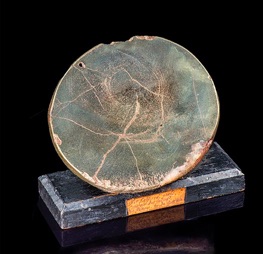
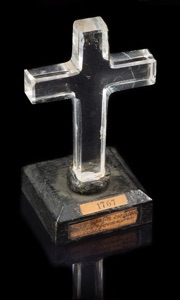

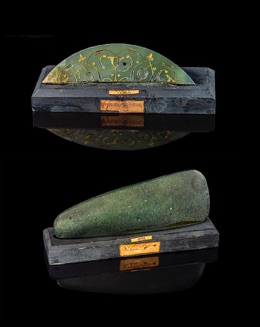
Gold inlaid nephrite jade (Italy, 16th century and jadeite axe (pre-Columbian period, Panama). Width of the wooden stands : 10 cm. Paris, MNHN, minéralogie. Photo: F. Farges©MNHN



Like gems, Haüy "scientifies" art objects: between science and art, he contributes largely to this concept so fashionable nowadays.
